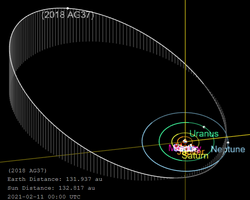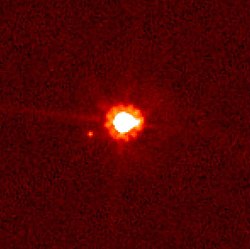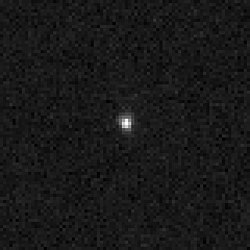
Sun
Jupiter trojans (6,178)
Scattered disc (>300) Giant planets: J · S · U · N
Centaurs (44,000)
Kuiper belt (>1,000)
(scale in AU; epoch as of January 2026; # of objects in parentheses)
These Solar System minor planets are the furthest from the Sun as of January 2026 [update] . The objects have been categorized by their approximate distance from the Sun on that date, and not by the calculated aphelion of their orbit. The list changes over time because the objects are moving in their orbits. Some objects are inbound and some are outbound. It would be difficult to detect long-distance comets if it were not for their comas, which become visible when heated by the Sun. Distances are measured in astronomical units (AU, Sun–Earth distances). The distances are not the minimum (perihelion) or the maximum (aphelion) that may be achieved by these objects in the future.
Contents
This list does not include near-parabolic comets of which many are known to be currently more than 100 AU (15 billion km ) from the Sun, but are currently too far away to be observed by telescope. Trans-Neptunian objects are typically announced publicly months or years after their discovery, so as to make sure the orbit is correct before announcing it. Due to their greater distance from the Sun and slow movement across the sky, trans-Neptunian objects with observation arcs less than several years often have poorly constrained orbits. Particularly distant objects take several years of observations to establish a crude orbit solution before being announced. For instance, the most distant known trans-Neptunian object 2018 AG37 was discovered by Scott Sheppard in January 2018 but was announced three years later in February 2021. [1]





